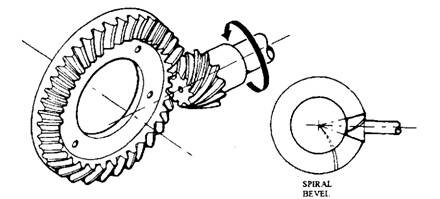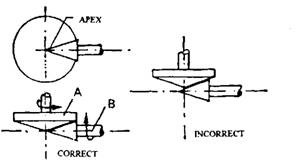Worm and Wheel Drive
Worm and Wheel Drive Since this drive is expensive, it is rarely used nowadays as a final drive on light vehicles, but is still used on heavy vehicles. However, this type of gear has a number of other applications on motor vehicles. Various arrangements, illustrated in Fig. 26.38, can be employed to provide a very quiet and long-lasting gear, but efficiency is less than the bevel (94 percent against 98 percent). This type of gear provides a large reduction in a small space. The worm may be mounted below (under-slung) or above (overhead) the wheel. An hour-glass or Hindley worm embraces more teeth than the straight worm but adjustment becomes more critical. Fig. 26.38. Worm drives. The sliding action of the worm causes friction, which is reduced by using a worm wheel of phosphor-bronze and a worm of case-hardened steel, but still the unit becomes hot. A large, well-cooled sump is incorporated to reduce oxidation of the oil at high temperature, which otherwise causes the oil to thicken.


